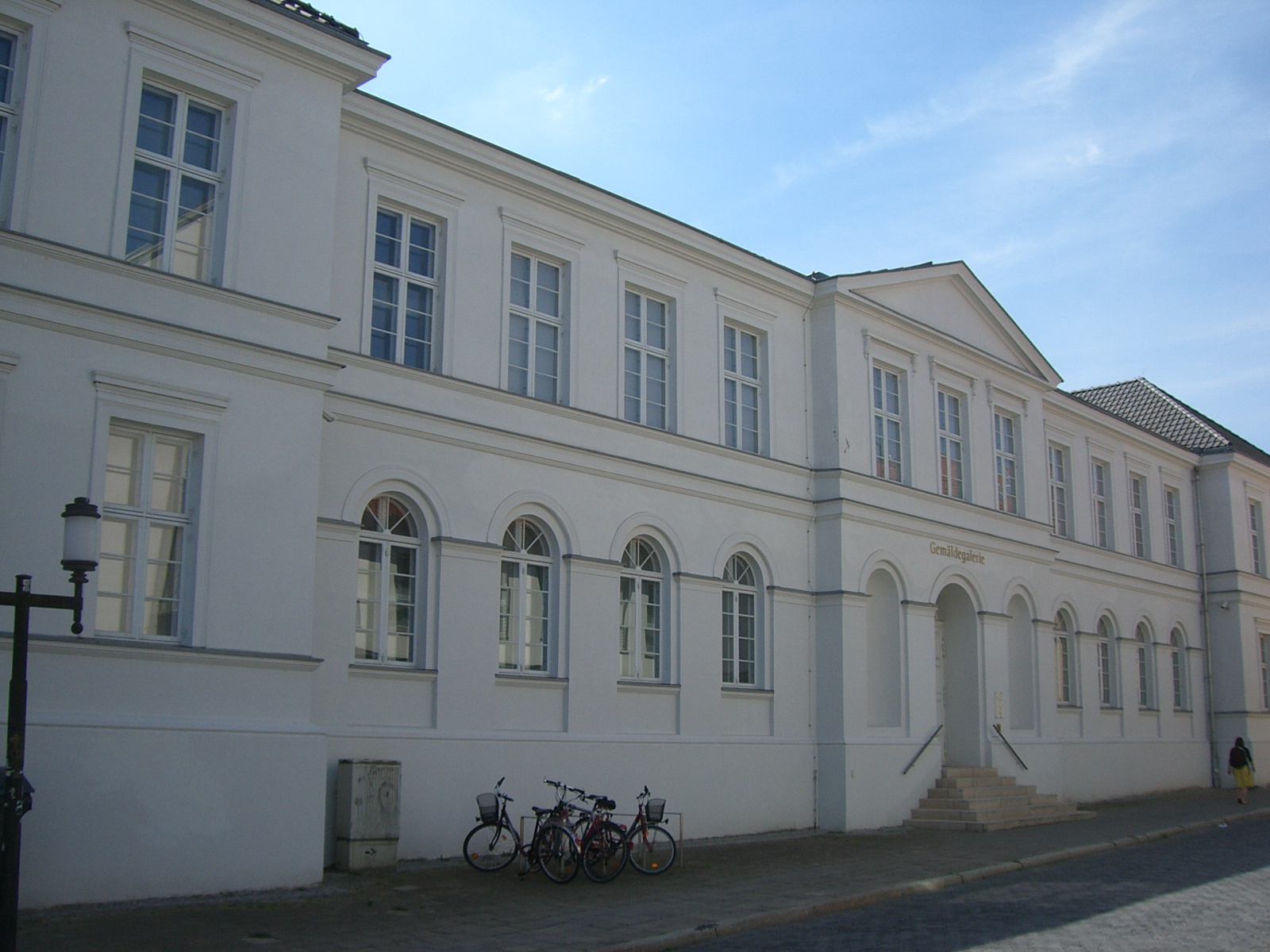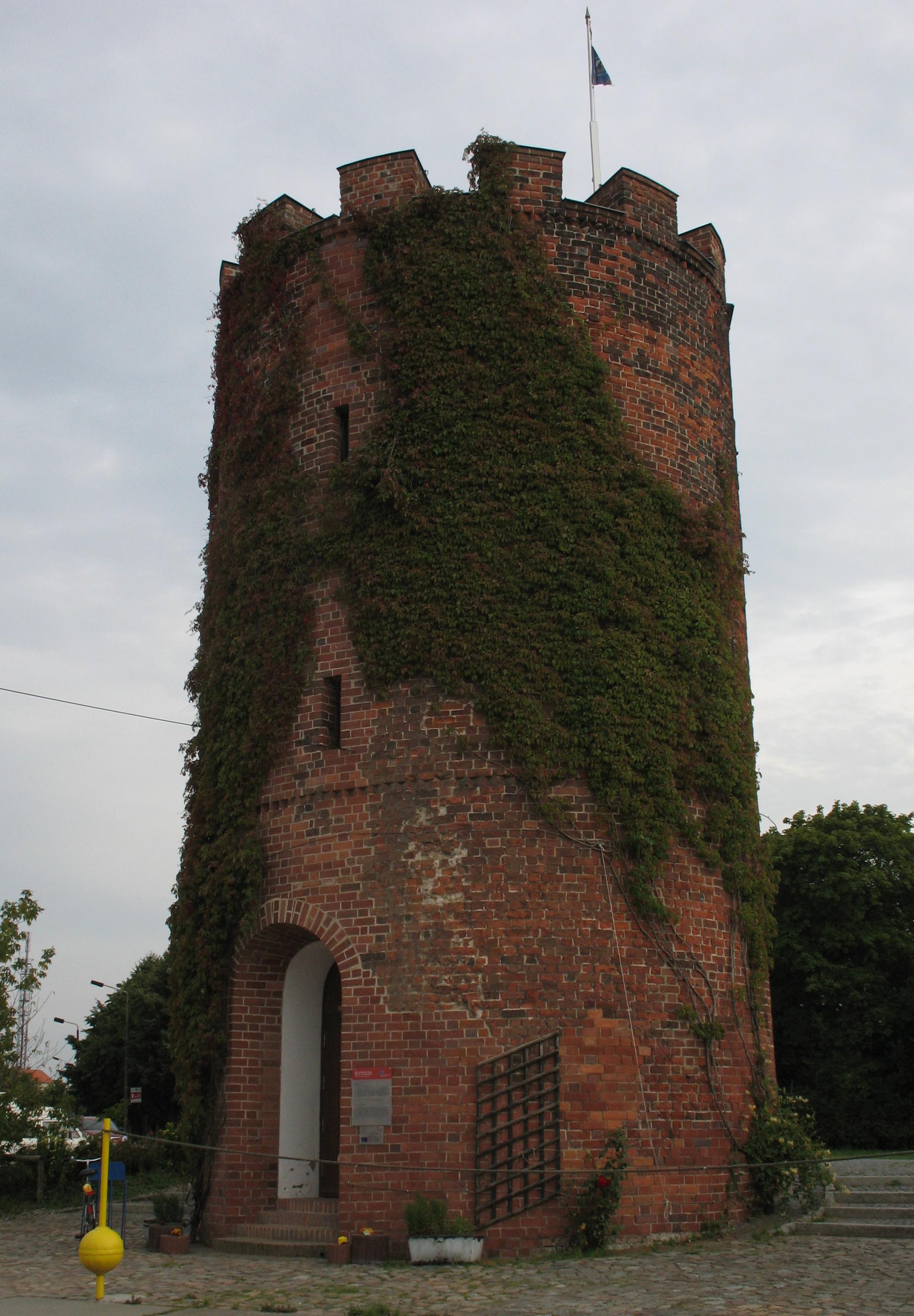|
Neubrandenburg (painting)
''Neubrandenburg'' or ''Neubrandenburg in the Morning Mist'' (German - ''Neubrandenburg im Morgennebel'') is an oil on canvas painting by Caspar David Friedrich, executed ''c.'' 1816, now in the Pommersches Landesmuseum in Griefswald. The artist's parents were both born in Neubrandenburg and he often painted it - another example is '' Neubrandenburg Burning''. Until 1900, it was owned by Langguth, a Griefswald merchant and relation of the artist.Helmut Börsch-Supan, Karl Wilhelm Jähnig: ''Caspar David Friedrich. Gemälde, Druckgraphik und bildmäßige Zeichnungen'', S. 338 Around 1928, it was acquired by the Städtisches Museum Stettin and was placed in the Stettiner Gemäldesammlung on the Veste Coburg from 1945 until 1970, before moving to the Stiftung Pommern in Kiel. Stiftung Pommern: ''Gemäldegalerie der Stiftung Pommern im Rantzaubau des Kieler Schlosses''. Neumünster 1972. It has been in its present location since 1999. See also *List of works by Caspar David Fried ... [...More Info...] [...Related Items...] OR: [Wikipedia] [Google] [Baidu] |
Caspar David Friedrich
Caspar David Friedrich (5 September 1774 – 7 May 1840) was a 19th-century German Romantic landscape painter, generally considered the most important German artist of his generation. He is best known for his mid-period allegorical landscapes, which typically feature contemplative figures silhouetted against night skies, morning mists, barren trees or Gothic ruins. His primary interest was the contemplation of nature, and his often symbolic and anti- classical work seeks to convey a subjective, emotional response to the natural world. Friedrich's paintings characteristically set a human presence in diminished perspective amid expansive landscapes, reducing the figures to a scale that, according to the art historian Christopher John Murray, directs "the viewer's gaze towards their metaphysical dimension". Friedrich was born in the town of Greifswald on the Baltic Sea in what was at the time Swedish Pomerania. He studied in Copenhagen until 1798, before settling in Dresden. He ... [...More Info...] [...Related Items...] OR: [Wikipedia] [Google] [Baidu] |
Pommersches Landesmuseum
The Pomeranian State Museum (german: Pommersches Landesmuseum) in Greifswald, Western Pomerania, is a public museum primarily dedicated to Pomeranian history and arts. The largest exhibitions show archeological findings and artefacts from the Pomerania region and paintings, e.g. of Caspar David Friedrich, a Greifswald local, such as ''Ruins of Eldena Abbey in the Riesengebirge''. The museum was established in the years of 1998 to 2005 at the site of the historical Franziskaner abbey. Near Binz on the nearby isle of Rügen, a satellite of the museum is under construction at '' Jagdschloss Granitz'', a former hunting lodge of the Rugian princes. This branch will be designated to Rugian history. An early 20th century museum in Stettin, then capital of the Province of Pomerania, was the "Provinzialmuseum pommerscher Altertümer", which was also named "Pommersches Landesmuseum" (Pomerania State Museum) since 1934.Werner Buchholz, ''Pommern'', Siedler, 1999, p. 438, Galler ... [...More Info...] [...Related Items...] OR: [Wikipedia] [Google] [Baidu] |
Griefswald
Greifswald (), officially the University and Hanseatic City of Greifswald (german: Universitäts- und Hansestadt Greifswald, Low German: ''Griepswoold'') is the fourth-largest city in the German state of Mecklenburg-Western Pomerania after Rostock, Schwerin and Neubrandenburg. In 2021 it surpassed Stralsund for the first time, and became the largest city in the Pomeranian part of the state. It sits on the River Ryck, at its mouth into the Danish Wiek (''Dänische Wiek''), a sub-bay of the Bay of Greifswald (''Greifswalder Bodden''), which is itself a sub-bay of the Bay of Pomerania (''Pommersche Bucht'') of the Baltic Sea. It is the seat of the district of Western Pomerania-Greifswald, and is located roughly in the middle between the two largest Pomeranian islands of Rugia (''Rügen'') and Usedom. The closest larger cities are Stralsund, Rostock, Szczecin and Schwerin. It lies west of the River Zarow, the historical cultural and linguistic boundary between West (west of the rive ... [...More Info...] [...Related Items...] OR: [Wikipedia] [Google] [Baidu] |
Neubrandenburg
Neubrandenburg (lit. ''New Brandenburg'', ) is a city in the southeast of Mecklenburg-Vorpommern, Germany. It is located on the shore of a lake called Tollensesee and forms the urban centre of the Mecklenburg Lakeland. The city is famous for its rich medieval heritage of Brick Gothic architecture, including the world's best preserved defensive wall of this style as well as a Concert Church (Saint Mary), the home venue of the Neubrandenburg Philharmonic. It is part of the European Route of Brick Gothic, a route which leads through seven countries along the Baltic Sea coast. Neubrandenburg is nicknamed for its four medieval city gates - "Stadt der Vier Tore" ("City of Four Gates"). Since 2011, Neubrandenburg has been the capital of the Mecklenburgische Seenplatte district. It is the third-largest city and one of the main urban centres of Mecklenburg-Vorpommern. The city is an economical node of northeastern Germany, featuring one of the highest national ranks in employment de ... [...More Info...] [...Related Items...] OR: [Wikipedia] [Google] [Baidu] |
Neubrandenburg Burning
''Neubrandenburg Burning'' (German - ''Das brennende Neubrandenburg''), dated around 1834, is an oil on canvas painting by Caspar David Friedrich, now in the Hamburg Kunsthalle. It is also known as ''Sunrise at Neubrandenburg'' (''Sonnenaufgang bei Neubrandenburg'') or ''Sunset at Neubrandenburg'' (''Sonnenuntergang bei Neubrandenburg''). The artist's parents were both born in Neubrandenburg and he often painted it - another example is ''Neubrandenburg (painting), Neubrandenburg''. See also *List of works by Caspar David Friedrich References External links * {{Caspar David Friedrich Paintings in the Hamburger Kunsthalle Paintings by Caspar David Friedrich 1830s paintings ... [...More Info...] [...Related Items...] OR: [Wikipedia] [Google] [Baidu] |
Veste Coburg
The Veste Coburg (Coburg Fortress) is one of the best-preserved medieval fortresses of Germany. It is situated on a hill above the town of Coburg, in the Upper Franconia region of Bavaria. Geography Location Veste Coburg dominates the town of Coburg on Bavaria's border with Thuringia. It is located at an altitude of 464 meters above NHN, or 167 meters above the town. Its size (around 135 meters by 260 meters) present one of the mediums fortresses in Germany. History Early history and Middle Ages The hill on which Veste Coburg stands had been inhabited from the Neolithic to the early Middle Ages, according to studies on results of excavations. The first documentary mention of ''Coburg'' occurs in 1056, in a gift by Richeza of Lotharingia. Richeza gave her properties to Anno II, Archbishop of Cologne, to allow the creation of Saalfeld Abbey in 1071. In 1075, a chapel dedicated to Saint Peter and Saint Paul is mentioned on the fortified Coberg. This document also refers to a ''V ... [...More Info...] [...Related Items...] OR: [Wikipedia] [Google] [Baidu] |
Stiftung Pommern
A stiftung () (properly ''Stiftung'', pl. ''Stiftungen'') is an institution/foundation which, with the aid of a property, pursues a purpose determined by the founder. A ''stiftung foundation'' exists to give effect to the stated, non-commercial wishes of its founder, as set out in a foundation deed and the articles of association (statutes). In effect, the assets with which the foundation is endowed become a separate legal entity. A stiftung foundation has no shares or members and is set up by a founder(s) in most cases to ensure the continuation of family assets. A stiftung foundation can have beneficiaries, and in that way they are in some way similar to the common law notion of trusts. The founders also have the right to transfer and terminate the foundation. Stiftungen are purely not for profit enterprises and commercial activities are generally not permitted to be conducted by them. This is the primary difference between an anstalt and a stiftung. Stiftungen are usually admin ... [...More Info...] [...Related Items...] OR: [Wikipedia] [Google] [Baidu] |
Kiel
Kiel () is the capital and most populous city in the northern German state of Schleswig-Holstein, with a population of 246,243 (2021). Kiel lies approximately north of Hamburg. Due to its geographic location in the southeast of the Jutland peninsula on the southwestern shore of the Baltic Sea, Kiel has become one of Germany's major maritime centres, known for a variety of international sailing events, including the annual Kiel Week, which is the biggest sailing event in the world. Kiel is also known for the Kiel Mutiny, when sailors refused to board their vessels in protest against Germany's further participation in World War I, resulting in the abdication of the Kaiser and the formation of the Weimar Republic. The Olympic sailing competitions of the 1936 and the 1972 Summer Olympics were held in the Bay of Kiel. Kiel has also been one of the traditional homes of the German Navy's Baltic fleet, and continues to be a major high-tech shipbuilding centre. Located in Kiel is the ... [...More Info...] [...Related Items...] OR: [Wikipedia] [Google] [Baidu] |
List Of Works By Caspar David Friedrich
This is an incomplete list of works by the German Romantic artist Caspar David Friedrich (1774–1840) by completion date where known. Friedrich was a prolific artist who produced over 500 attributed works; however, he is generally known for only a small number of works seen as emblems of Romanticism.Siegel, 3 In line with Romantic ideals of the time, Friedrich intended that his paintings would function visually only, and thus he was cautious that the titles given to his work were not overly descriptive or evocative. It is likely that some of today's relatively literal titles, such as ''The Stages of Life'', were not given by the artist himself, but were instead adopted during one of the revivals of interest in the artist during the late 19th or early 20th century. ". designboom ... [...More Info...] [...Related Items...] OR: [Wikipedia] [Google] [Baidu] |
1816 Paintings
This year was known as the '' Year Without a Summer'', because of low temperatures in the Northern Hemisphere, possibly the result of the Mount Tambora volcanic eruption in Indonesia in 1815, causing severe global cooling, catastrophic in some locations. Events January–March * December 25 1815–January 6 – Tsar Alexander I of Russia signs an order, expelling the Jesuits from St. Petersburg and Moscow. * January 9 – Sir Humphry Davy's Davy lamp is first tested underground as a coal mining safety lamp, at Hebburn Colliery in northeast England. * January 17 – Fire nearly destroys the city of St. John's, Newfoundland. * February 10 – Friedrich Karl Ludwig, Duke of Schleswig-Holstein-Sonderburg-Beck, dies and is succeeded by Friedrich Wilhelm, his son and founder of the House of Glücksburg. * February 20 – Gioachino Rossini's opera buffa '' The Barber of Seville'' premières at the Teatro Argentina in Rome. * March ... [...More Info...] [...Related Items...] OR: [Wikipedia] [Google] [Baidu] |
Paintings By Caspar David Friedrich
Painting is the practice of applying paint, pigment, color or other medium to a solid surface (called the "matrix" or "support"). The medium is commonly applied to the base with a brush, but other implements, such as knives, sponges, and airbrushes, can be used. In art, the term ''painting ''describes both the act and the result of the action (the final work is called "a painting"). The support for paintings includes such surfaces as walls, paper, canvas, wood, glass, lacquer, pottery, leaf, copper and concrete, and the painting may incorporate multiple other materials, including sand, clay, paper, plaster, gold leaf, and even whole objects. Painting is an important form in the visual arts, bringing in elements such as drawing, composition, gesture (as in gestural painting), narration (as in narrative art), and abstraction (as in abstract art). Paintings can be naturalistic and representational (as in still life and landscape painting), photographic, abstract ... [...More Info...] [...Related Items...] OR: [Wikipedia] [Google] [Baidu] |







